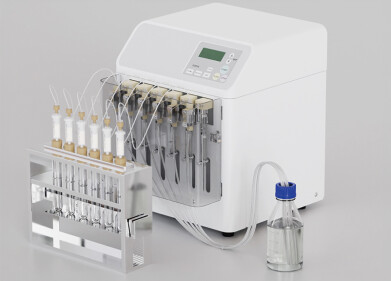Sample preparation
An Apple a Day - Chromatography Analyses Pesticide Residues
Jan 17 2020
Apples are one of the most popular fruits that make up one of our ‘five-a-day’ we need to eat to stay healthy. They are a source of vitamins and minerals along with soluble and insoluble dietary fibre. Both the skin and the flesh contain healthy levels of nutrients. There are also compounds like pectin in apples that is said to play a role in the reduction of cholesterol and cardiac disease.
Besides these healthy nutrients, apples can also contain pesticides such as insecticide and fungicides - by-products of the growing process. A recent paper in the journal Food in health and disease has used QuEChERS and LC-MS to analyse the levels of fungicide residues in apples in Macedonia. The use of these techniques is discussed in the article, Determination of Chloramphenicol by QuEChERS and HPLC-MS/MS combination in matrices of animal origin. Let’s take a look at the research and also see how we should best clean our apples to rid them of pesticide residues.
Measuring residues in apples
The presence of pesticide residues has been identified as a potential health risk causing acute or chronic toxicity. If fruit producers follow the regulators guidelines on pesticide use then there is likely to be a low risk of excessive pesticide residues on the food we eat. But nevertheless, regulators and producers have to have strict control measures in place and analytical techniques that are capable of quickly analysing food for potentially toxic residues.
The team from Macedonia used apple samples from two different locations in Macedonia with samples taken at various stages of the apple’s maturation and also from ripe apples that were ready to be picked and eaten. They used QuEChERS methods to extract the pesticide residues before analysis using ultra-performance liquid chromatography-triple quadruple mass spectrometry (UPLC-TQ/MS) to analyse the samples for residues.
Safe levels and washing instructions
The researchers found that although the apple samples all contained fungicide residues, they were all below maximum limits and the apples were safe to eat. The levels of pesticides were found to vary depending on the location of the apple cultivation, suggesting different levels of pesticide application in different areas.
Meanwhile research carried out in the US looked at how different washing solutions reduced pesticide levels in apple samples. Researchers applied pesticides to apples and washed the samples in either tap water, bleach or a baking soda/water solution. They found that the baking soda/water solution was the most effective at washing off pesticides from the apples.
Keep washing that fruit but maybe try baking soda too.
Events
Mar 18 2025 Beijing, China
Mar 25 2025 Paris, France
Mar 31 2025 Beijing, China
Apr 02 2025 Saigon, Vietnam
Apr 22 2025 Kintex, South Korea














